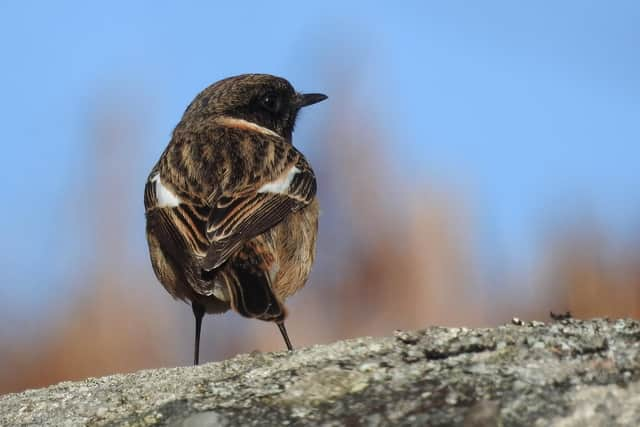The little bird that folk believed spoke to the devil himself


A folk rhyme goes, ‘stane chack, deevil tak, they who harry my nest will, never rest,, will meet the pest, de’il break their lang back, wha my eggs wad tak’ tak’.
Essentially, with its blood-red breast, the stonechat was the devil’s bird and therefore protected.
Advertisement
Hide AdAdvertisement
Hide AdFurthermore, if you did action so foolishly as to take a stonechat’s eggs, then a dire fate awaited you.


For the deeply superstitious country folk of the time, this was pretty good protection.
This little cousin of the familiar robin also turns up in literary references such as WH Auden who noted the bird in a poem and described it as ‘a bird stone-haunting, an unquiet bird.
Much of the stonechat’s reputation in folklore derives from its unusual and characteristic chattering call.
Advertisement
Hide AdAdvertisement
Hide AdThey were believed to be in constant conversation with the devil, thought to carry a drop of the devil’s blood, and the devil would break the back of anyone who harmed a stonechat’s eggs.
Constantly on the move the stonechat has favourite perches on a gorse bush, a boulder, a spring of heather, or perhaps a bracken frond.
From these positions the bird produces a constant chattering and this plus the distinctive plumage makes it a bird that is impossible to overlook.
From being an uncommon winter visitor to the Peak District, for example, the stonechat is now a regular breeder and increasing yearly in numbers.
Advertisement
Hide AdAdvertisement
Hide AdThis is a nice addition to the bird fauna for my local walks, but at the same time, the bird’s cousin the whinchat has declined.
That is a sad loss as the whinchat is a delightful little bird.
Both these birds should be arriving back on the breeding grounds along with their cousins the wheatear and the upland blackbird, or ring ouzel.
With the current restrictions on access, folk won’t have a chance to see these birds for a few months.